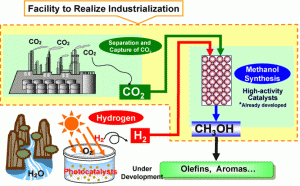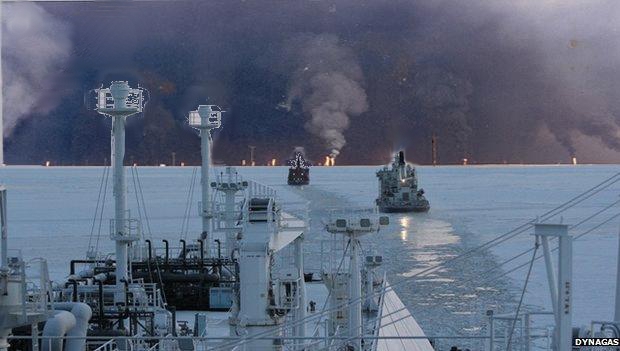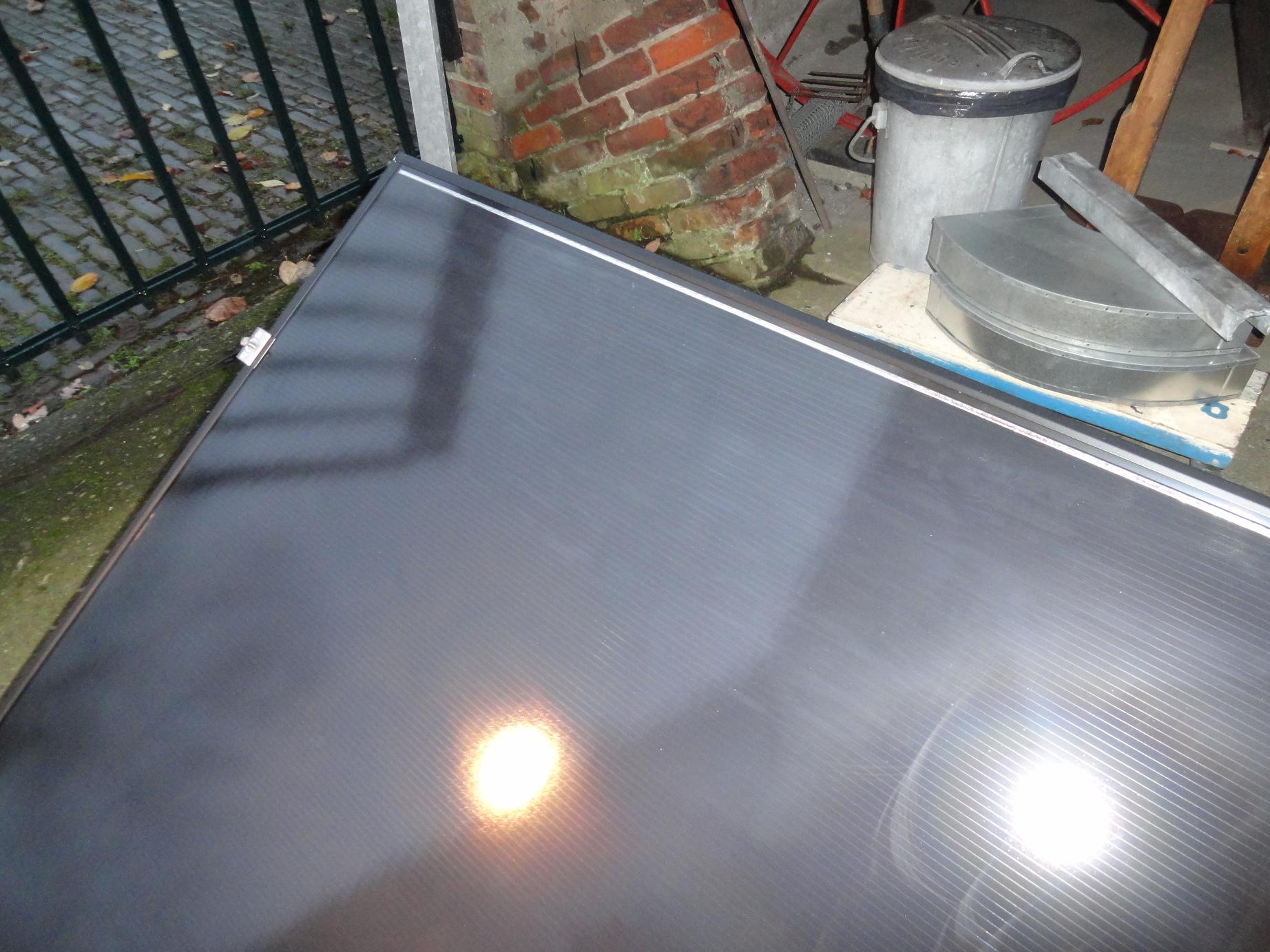Geoengineering means ‘Doing specific things to influence Earth’. Its being treated like a untoucheable subject one can not really talk about, while it is happening on a massive scale as we speak. The immense army of gasoline burninge vehicles is creating damanging and poisonous aerosols every day, in some cases visibly called smog, and add chemicals to our environment that change it in the shorter and longer term.
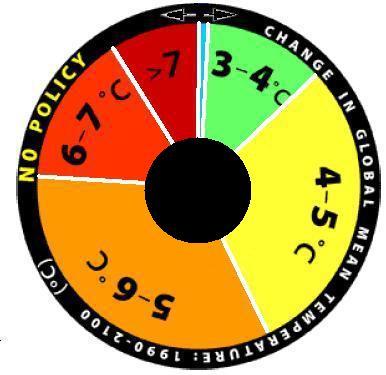
This piechart shows our options. Above 2 degrees we’re screwed, so
our goal is to stay within the blue part, only possible with specific action, geoengineering.
At a recent conference on the topic some options where discussed. Without going into the specific methods it can be observed that whatever one may propose it will have opponents, and the more methods proposed the harder it becomes to achieve agreement on the merits. There are some that argue we should not be discussing actual approaches as they may jeopardize the multilateral nature of climate talks. As if it is more important to agree on a plan to solve climate imbalance than actually solving it!

Adding iron to the ocean increases it’s CO2 absorption
But there are several ill defined beliefs people have that influence their support for geoengineering methods that should be named to make it possible to have some validity to the remaining arguments.
0. Health effects of method ignored. We would like to stay with the current set of species, not a wildly diminished set in a world less capable of supporting them. No introduction of pollutants should be allowed, especially ones affecting humans please. Anything lethal to our environment (but cooling it) is still useless.
1. Energy requirements ignored. Geoengineering will require energy. Some methods can be dismissed outright if they either have no energy strategy or use easily depleteable energy sources. Fossil fuels are clearly not allowed nor sufficient nor effective.
2. Material resources requirements ignored. If you want to cover the oceans with white plastic you probably could, but are you sure? Iron fertilization requires iron filings, which require energy to make, transport, apply. A succesfull technique has to pay for itself or be costless.
3. We can’t change the ecology. One may draw a map showing all areas where we can grow more trees, where we exclude all protected areas and be left with to little to solve the problem. The problem is extinciton of most species including us. The criteria should be to minimize ecological disturbances, but certainly allow any increase in the volume of biomass, lifeforms if it helps. You can change the ecology, as long as you don’t destroy it, and then of course minimally.
4. There’s "No way out". It seems at the moment no approach is allowed to win the debate. That is how people talk about it. We dismiss stratospheric sulphur seeding for it’s damaging effects, then black ball Iron Fertilization (even though it worked!) and move on to fantasize about large scale approaches that may not even make sense. A lot of attention is parked in the "If we do this than we have that and that benefit!" Listing benefits, getting giddy, achieving nothing. "No way out" is preached by the carbon lobby as the most lazy strategy to render people useless.
Methods
Lets go through the methods discussed and see how they do on the score on the above points.

Albedo, reflecting light, sends energy back into space, cooling Earth
Creating polar albedo using glass sheres, ‘Ice911‘
Leslie Field is looing to increas Albedo, reflection of sunlight back into space. She has been experimenting with small psheres (40-100 nanometer) she buys off the market. The glass sheres float and reflect sunlight, and dumping them in the polar region can cool it just enough to increas ice and protect existing ice from melting. Its not a mystery whether it will cool or float, but first obviously there’s a health effect that is being ignored. What do floating glass beats do to marine life? Could it become airborne and be inhaled? Where does it end up? Microplastic is a problem as it can even enter our blood stream. Second, an energy concern. What energy are you using to make massive amounts of sperical glass beats? Leslie admits she has other issues, like how to contain them.
It seems it’s a good idea executed badly. We think the use of glass is one of the best options at sea as there’s plenty of raw material for glass (most of our planet ignoring the iron at the core). So let’s not dismiss floating glass, but find improvements.
But Leslie also makes a mistake in trying protect ice by covering it directly. If she needs cooling she can achieve that more effectively where heating is strongest. Not on the pole but around the equator! She does have a point in that the dark polar ocean warms more rapidly, so our question would be if cooling at the equator would be more effective than at the poles in achieving cooling at the poles.

‘Bright Water‘ creating microbubbles in water
Water containing airbubbles will turn white and reflect sunlight. Russel Zeitz solution is also to increase Albedo. Bubbles can stay in solution for days if they are very small. Immediately you see there’s a problem with this suggestion. Eventhough air is free the mixing must require energy, the energy requirement is not adressed. The bubbles are short lived, even if they last for a month, they dissapear, and warming sets in again. How are we going to apply this technology for the duration it takes to get back to 280 PPM CO2? The health question is also asked, not answered. This can work if it would be solar or wind powered, but how many machines does it take, who runs them?
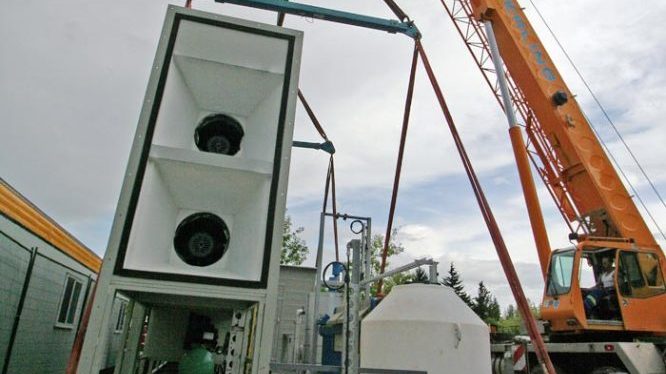
Chemically capturing CO2 from the air
It’s not hard to capture CO2. Its like making soda, but with some extra chemical to bind CO2 as you mix it with water. Once it’s in solution and concentrated you can get it out and store it, even ship it and sell it (to an oil comany). David Kieth piloted an approach, he’s an expert on the topic of CSS. The hard part of CSS is where to go with the CO2. We have seen it used to get more oil and gas out of wells, in the US CO2 leaked to the surface from a Fracking well, with dangerous effects (suffocating farm animals in the field). A better option, making it much more interesting is using the CO2 to make methane and even plastic. This however would require use of renewable energy while the technology is firmly in the hands of the fossil fuel industry. To monetize CO2 is counterproductive as long as the value of money is derived from it’s ability to purchase fossil fuels.
Using Biomass to capture CO2 from the Air (producing Biochar)
There are many more methods of capturing CO2, mainly through biomass production. Biochar is charcoal of from this biomass, and it turns out biochar can be stabile in the soil, with beneficial effects. So people like Richard Branson are looking into it, we wrote about it here as Terra Preta, black earth, the most fertile kind. Jim Thomas dismisses this option based on an analysis of land where it’s allowed to change the vegetation. He (rediculously) favours finishing the legal framework before making the situation more complex with actual action. We clearly don’t have that option.
Amazingly there is another way to use the storage capacity of the soil, and that’s by simply not plowing. "No Till Farming" strategy will leave carbon in the soil where plowing would otherwise allow it to be oxidized. Many say to Plow is not helping much anyway. Can we stop then!? Here it’s clear the term Geoengineering is just a word, what we look for is smarter behaviour vis a vis our environment!
Tilling came about in order to remove weeds to increase production, but it appears that if we allow crops to grow all year round we end up with both en more vital soil, a bigger variety of food crops and less CO2.

Algae and Deep Ocean Fertilization
Using biomass to remove CO2 is such a wide topic so we pick one more that’s being discussed a lot in the context of geoengineering, which is large scale algae growing. This is assumed to happen at sea and not on land (which is what Jim Thomas does to dismiss it). Growing algae at sea has been investigated and can reliver results as long as you don’t stop doing it. There’s no reason however to stop as it protects and fosters marine life. The argument against it is the fertilizer requirement. People that looked deeper into this topic however have clear answers to all objections. Fertilizer will be deep ocean water, from around 200 meter, that can be pumped up using wave action. The process is simply bringing the nutrients where the sun is, and it works.
Read carefully: Befor you follow the link at the end of this paragraph consider the objections raised in it. The two main reasons to disqualify pumping up deep ocean water is nr. 1. The effects can not be measured easily, as they include wide scale cooling! Nr. 2 if one stops pumping up deep ocean water the climate will warm mainly because of surface water mixing with deep water warming the oceans. But why would you stop?! This is the study.
More options to follow
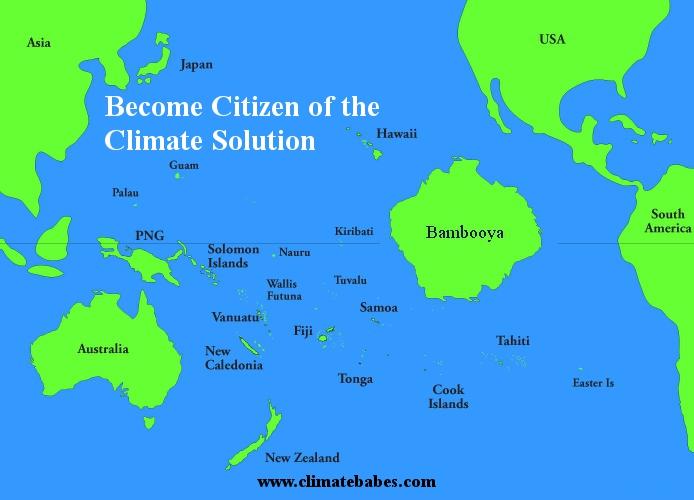
Our solutions nr. 1. Bambooya
Growing biomass at sea does not have to be in the water. We propose to build rafts so big they become like land. The rafts can be made of Bamboo, grown on the floating land! Fertilization with deep ocean waters. This means one can grow a continent of bamboo, capture all the carbon one wants, turn it into charcoal and sink it to the ocean floor. At the same time one can have all the normal agriculture and fishfarms going on. If you’d like to try this on a warm coast somewhere, email us here.
Our solutions nr. 2. The new steel
We will remain slightly secretive about the second solution as it is quite an enormous dislocator of current interests. It can solve many problems, including irrigation, albedo, the carbon crunch, growing food in arid regions, cutting cost of mitigation. We need about 30.000 Euro to demo it.





